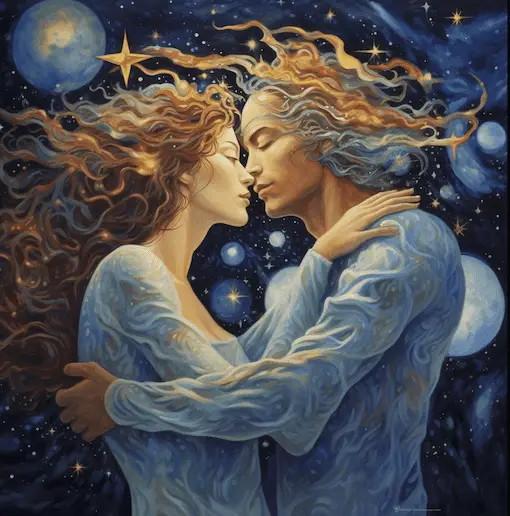Maori legends are a rich source of inspiration for theater productions, as they offer powerful narratives, rich characters, and vivid imagery.
Maori legends are special in New Zealand because they come from the Maori people, who happen to be the the native Polynesian people of the country. These legends have been around for generations, passed down from their ancestors long before Europeans even set foot in New Zealand.
They’re unique because they represent the Maori culture, their beliefs, and their way of life. Plus, they’re just really cool stories filled with magical creatures, epic battles, and powerful heroes.
If you want to learn about the history and culture of New Zealand, Maori legends are definitely worth checking out!
Here are some examples of Maori legends that could be adapted for the theater:
- Maui and the Sun – This legend tells the story of Maui, the mischievous trickster who sets out to slow down the sun so that his mother’s flax could dry. The story is filled with humor, adventure, and magical elements, making it perfect for a family-friendly theater production.
- Hinemoa and Tutanekai – This is a love story that tells the tale of Hinemoa, a beautiful woman who falls in love with Tutanekai, a handsome musician. The story is set in the beautiful Rotorua Lakes district and is known for its romantic and poetic elements, making it perfect for a romantic theater production.
- The Creation Story – This legend tells the story of how the world was created, according to Maori beliefs. The story is filled with mythological characters and elements, making it ideal for an epic theater production that explores the origins of the world.

Why You Should Mount Maori Themed Productions
Overall, Maori legends offer a wealth of material for theater productions, with their rich storytelling, diverse characters, and imaginative settings.
Whether you’re interested in comedy, romance, action, or epic drama, there’s a Maori legend that can be adapted to suit your theatrical needs.
How to Mount a Production
Mounting a Maori legend as a theater production can be a fun and creative project. Here are some general steps to consider when mounting a Maori legend as a theater production:
- Choose a Maori legend to adapt – Pick a Maori legend that you find interesting and that would work well as a theater production. Look for stories with compelling characters, vivid imagery, and themes that resonate with today’s audiences.
- Research and understand the story– Take the time to learn about the legend you’ve chosen. Read different versions of the story. You can find different versions from various bookstores or online such as Amazon, or New Zealand online stores such as Fishpond.co.nz. Research the cultural and historical context of the legend, and talk to Maori elders or Kaumatua/Kuia experts to gain a deeper understanding of the legend’s significance.
- Develop a script – Adapt the legend into a script that is suitable for a theater production. This may involve condensing or expanding the story, creating dialogue for characters, and adding or removing scenes to suit the medium.
- Design the set, costumes, and props – Consider how you will bring the legend to life on stage. Think about the setting, the characters’ costumes, and any props or special effects that will be needed to enhance the storytelling.
- Cast and rehearse – Once you have a script and production design in place, cast the actors for the play and begin rehearsals. Work with the actors to develop their characters, blocking, and delivery.
- Perform and promote – Finally, put on the show and promote it to the community. Share the legend’s cultural and historical significance with audiences and encourage them to learn more about Maori culture.
If you want to learn more about famous Maori actors check out my other blog posts, Celebrating the Famous Maori Actors in our Society, and Maori playwrights and their works“Uncovering the Rich Cultural Tapestry of New Zealand through Maori Playwrights and their Plays”
Developing and Creating your Own for schools
- Research Maori legends – Start by researching different Maori legends to get an idea of the themes, characters, and imagery that are commonly found in Maori stories. This will give you a foundation to build on when creating your own legend.
- Choose a theme – Think about the message or theme that you want to convey through your legend. This could be a message about respect, bravery, or the importance of nature, for example.
- Create characters – Develop characters that embody the theme of your legend. Think about their personality traits, strengths, weaknesses, and how they will interact with each other and the world around them.
- Write the story – Write the story of your Maori legend, using the characters and themes you’ve developed. Remember to use vivid imagery, descriptive language, and poetic devices to make the story come alive.
- Incorporate Maori language and culture – This is obvious to make your legend authentic, consider incorporating Maori language and cultural references into the story. -You can also consult with Maori elders or experts to ensure that your story is respectful and accurate.
- Share and perform – Once your legend is complete, share it with your students and consider staging a performance of the legend. This can be a great way to engage students in Maori culture and history while also fostering their creativity and imagination.
Mounting a Maori legend as a theater production requires research, creativity, and collaboration.
With the right approach, a Maori legend can be transformed into a compelling and entertaining theater production that honors Maori culture and history.
Where to purchase excellent Maori ledgend books
Check out playmarket for some excellent Maori plays that are based on Maori legends. These are a great resource.


